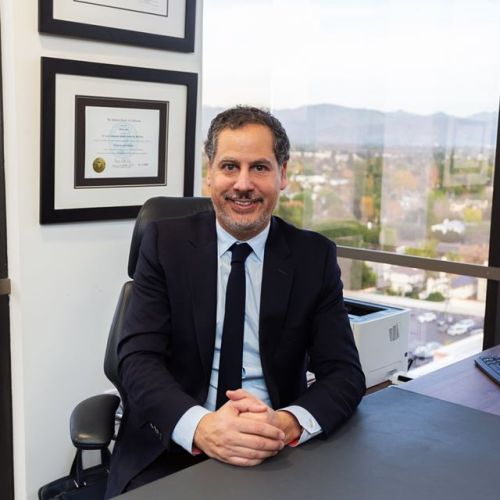When Is ERA Testing Recommended?

If you’ve invested your time, energy, and heart into in vitro fertilization (IVF) in the attempts to grow your family, you want every chance for the procedure to succeed.
IVF can be challenging to experience. It is one of the most successful forms of assisted reproductive technology, but the pregnancy rate is just about 55.6% for people under 35. And IVF success rates go down the older the mother, too.
At the California Center for Reproductive Health, our fertility specialists, Eliran Mor, MD, and Irene Woo, MD, do everything possible to make your IVF experience successful. We know how heartbreaking it can be when IVF doesn’t result in a pregnancy.
IVF can fail due to health of the embryo, usually related to genetic errors, but also because of problems with the mother’s uterine lining, called the endometrium. This lining sits inside the uterus and prepares each month for the arrival and implantation of the embryo. Even if the embryo is genetically healthy, an inhospitable lining means pregnancy can’t occur.
At the California Center for Reproductive Health, we use a cutting-edge test called Endometrial Receptivity Analysis (ERA®) to improve the chances of successful embryo transfer.
Here’s when we recommend ERA and how it can help you grow your family.
What Is ERA®?
ERA was developed by the company Igenomix. It provides a personalized genetic diagnosis that evaluates the receptivity of the endometrium for embryo implantation.
In response to estrogen and progesterone levels, the endometrium produces proteins responsible for preparing the area for implantation. The proteins increase the endometrium thickness and receptivity for an embryo.
The proteins are also regulated by a woman’s gene activation (or inactivation). The ERA test evaluates all 238 genes related to the receptivity of the endometrial lining. It can then determine when the optimal window for implantation is, increasing the chance that a successful pregnancy occurs.
Who is a candidate for ERA?
ERA testing can improve the chances of a successful frozen embryo transfer in patients who have experienced 1 or 2 frozen implantation failures. In these patients, the embryo was healthy and the woman’s uterine lining and uterus are normal.
While most women have a window of transplantation that typically occurs after 5 days of progesterone supplementation, this isn’t true for all women. We may find that you have a different window that makes it more likely for a successful pregnancy. The ERA test helps determine your personalized embryo transfer time.
What happens during ERA testing?
ERA testing involves taking a biopsy of the woman’s uterine lining and then testing that sample for its gene expression.
The biopsy is done at the moment when our doctors would usually transfer the embryo into the womans’ uterus. She undergoes a process like the transfer cycle, but doesn’t actually have the embryo transferred.
This preparatory cycle requires a woman to take oral medications and injections to stimulate the uterine lining. Our doctors also perform transvaginal ultrasounds and do blood testing to measure reactions to the medications.
When the uterus is ready to receive an embryo, our doctor performs the biopsy, which is a 2-minute procedure that may be slightly uncomfortable. Sedation is not required, as the doctor places a flexible plastic tube into the patient’s uterus and moves it back and forth to collect cells.
Our office then sends the sample to a specialized lab to test the genes. Your results determine how we time the embryo transfer during the next cycle.
If you’re having trouble with IVF success, contact the California Center for Reproductive Health. We use advanced technology and years of experience to do everything possible to help you achieve a successful pregnancy. Call one of our offices in Encino, Valencia, Alhambra, or West Hollywood, California, to set up an appointment. Alternatively, reach out via this website.
Eliran Mor, MD
Reproductive Endocrinologist located in Encino, Valencia & West Hollywood, CA
FAQ
What does a reproductive endocrinologist and infertility specialist do?
Reproductive endocrinology and Infertility is a sub-specialty of Obstetrics and Gynecology. In addition to managing medical and surgical treatment of disorders of the female reproductive tract, reproductive endocrinologist and infertility (REI) specialists undergo additional years of training to provide fertility treatments using assisted reproductive technology (ART) such as in vitro fertilization.
Reproductive endocrinologists receive board certification by the American Board of Obstetrics and Gynecology in both Obstetrics and Gynecology and Reproductive Endocrinology and Infertility.
When should I see an REI specialist?
In general, patients should consider consulting with an REI specialist after one year of trying unsuccessfully to achieve pregnancy. The chance of conceiving every month is around 20%, therefore after a full year of trying approximately 15% of couples will still not have achieved a pregnancy.
However, if a woman is over the age of 35 it would be reasonable to see a fertility specialist earlier, typically after 6 months of trying.
Other candidates to seek earlier treatment are women who have irregular menses, endometriosis, fibroids, polycystic ovary syndrome (PCOS), women who have had 2 or more miscarriages, or problems with the fallopian tubes (prior ectopic pregnancy).
What are the reasons we are having trouble conceiving?
Approximately 1/3 of the time cause for infertility is a female factor, 1/3 of the time a male factor, and the remaining 1/3 a couples’ factor.
At CCRH, we emphasize the importance of establishing a correct diagnosis. Both partners undergo a comprehensive evaluation including a medical history and physical exam.
Furthremore, the woman’s ovarian reserve is assessed with a pelvic ultrasound and a hormonal profile. A hysterosalpingogram (HSG) will confirm fallopian tube patency and the uterine cavity is free of intracavitary lesions. A semen analysis is also obtained to evaluate for concentration, motility, and morphology of the sperm.
Additional work up is then individualized to direct the best possible treatment option for each couple.
What is IVF? What is the process like?
In vitro fertilization (IVF) is the process that involves fertilization of an egg outside of a woman’s body.
The process starts with fertility drugs prescribed to help stimulate egg development. In your natural cycle, your body is only able to grow one dominant egg, but with stimulation medication we can recruit multiple eggs to continue to grow. After about 8-10 days of stimulation, the eggs are surgically retrieved and then fertilized with sperm in a specialized laboratory. Fertilized eggs are then cultured under a strictly controlled environment within specialized incubators in the IVF laboratory for 3-5 days while they develop as embryos. Finally, embryos (or an embryo) are transferred into the uterine cavity for implantation.
Should I have IVF?
Before deciding if IVF is the right choice, it’s important to sit down with an REI specialist to discuss available treatment options. For some people, other methods such as fertility drugs, intrauterine insemination (IUI) may be the best first choice treatment. At CCRH, we believe each individual couple is unique and not everyone needs IVF.
Is the IVF procedure painful?
While not painful, the fertility medications may some side effects including headaches, hot flashes, mood swings, and bloating. The injection sites may also bruise.
Will IVF guarantee a baby?
Unfortunately, no. Many people think once they start IVF it’s a matter of time that they will be pregnant and have a baby. But according to national statistics per the Society of Assisted Reproduction (SART), on average 40% of assisted reproduction cycles achieve live births in women under age 35. The chances of success then continue to decrease with advancing age.
At CCRH, we employ only evidence-based interventions to ensure patient safety and optimal outcome. While we cannot guarantee a baby, we guarantee that you will receive the best, most advanced, personalized care to help you maximize your chance of a baby.
What is the success rate for IVF?
The average IVF success rate (success measured in live birth rate) using one’s own eggs begins to drop around age 35 and then rapidly after age 40. This is due to the decline in egg quantity and egg quality as a woman ages.
Our clinic’s success rate consistently beats the national average year after year.
Do insurance plans cover infertility treatment? How much does IVF cost?
Individual insurance plans often do not have any coverage for infertility treatments. If you have a group plan, you can call members services to see if they have coverage for infertility (including consultation/workup and IVF).
After your consultation with our REI specialist, one of our dedicated account managers with sit with you to go over the cost of treatment.




